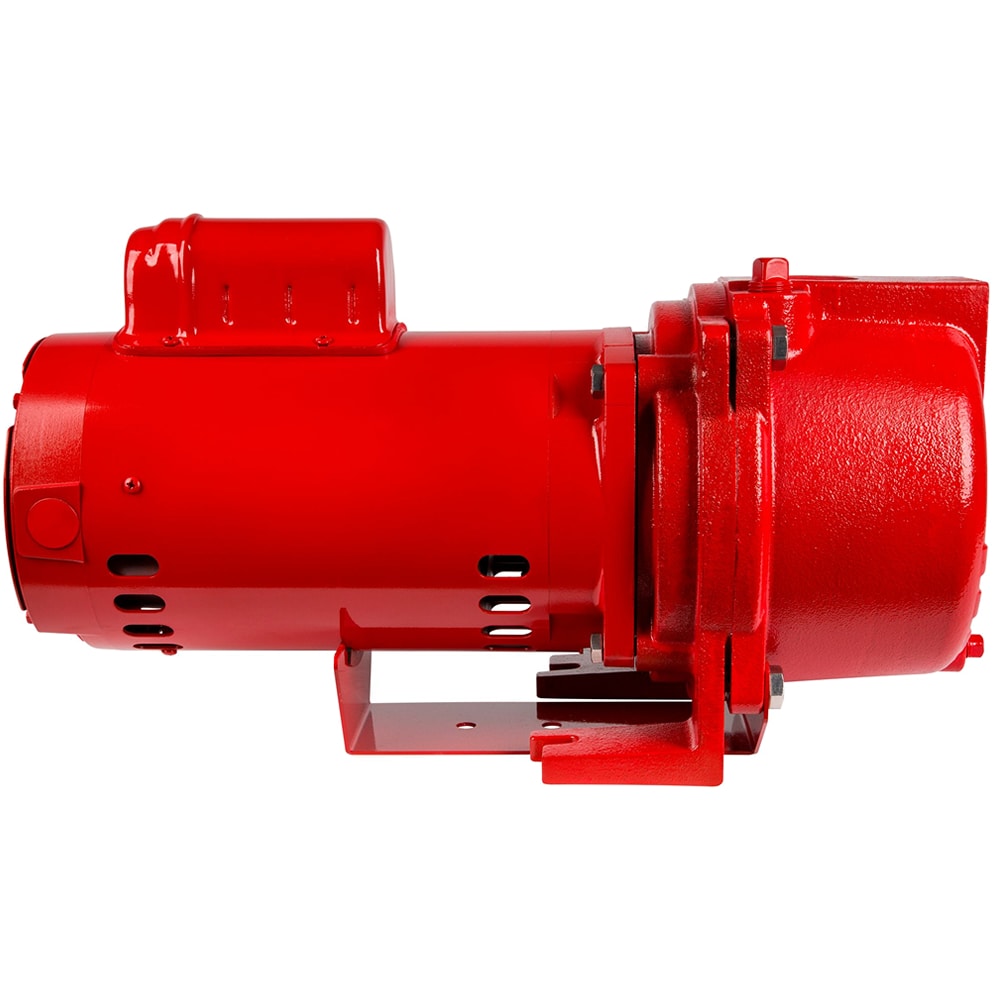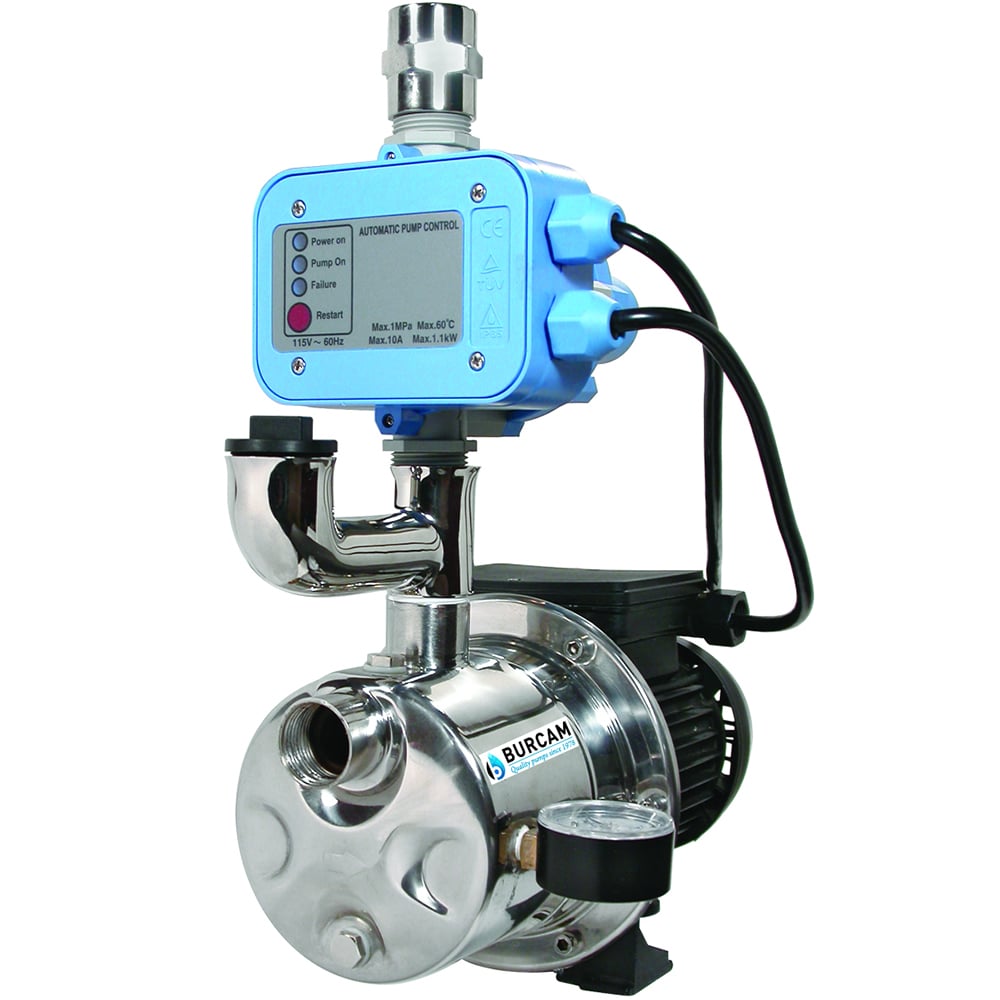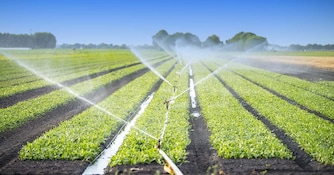
Protect Water Pumps from Freezing
Winterizing irrigation pumps, well pumps, fountain or pond pumps, and water lines are all critical to prevent them from damage or cracked casings and pipes if water freezes inside them in the cold.
Fortunately, preventing pump systems and water pipes from freezing in the winter is really simple to do, and only takes a few minutes to accomplish.
Follow the steps in this article to learn how to drain your pump for winter the right way, and keep your water pump from freezing in sub-zero temperatures.
Do All Water Pumps Need to be Winterized?
 Generally speaking, water pumps that operate deep underwater don't need to be winterized the same way as a surface pump since water does not freeze below a certain depth. In these cases, it's generally recommended to sink or weigh down the pump motor to the lowest level possible underwater. This is an alternative solution when it is difficult to remove a fountain or pond pump.
Generally speaking, water pumps that operate deep underwater don't need to be winterized the same way as a surface pump since water does not freeze below a certain depth. In these cases, it's generally recommended to sink or weigh down the pump motor to the lowest level possible underwater. This is an alternative solution when it is difficult to remove a fountain or pond pump.
All shallow or surface water pumps need to be winterized in cold-weather areas. This includes pond or fountain pumps, convertible jet pumps, pool pumps, irrigation systems, and more. They all need to be drained; don't let them freeze in any circumstance. If for some reason they can't be drained, remove the pump motor(s) from the water and store them in a place that prevents freezing temperatures.
If you don't plan on using your pump for multiple months, it's always a good idea to drain it and move the pump to a warmer or temperature-controlled space for the best results.
Steps Before Winterizing a Pump
 When water freezes, it expands while other materials, like the metal found in water pumps, tend to contract and get smaller as temperatures drop. This combination can lead to water lines that burst and a cracked cast iron pump.
When water freezes, it expands while other materials, like the metal found in water pumps, tend to contract and get smaller as temperatures drop. This combination can lead to water lines that burst and a cracked cast iron pump.
In year-round applications, like well pumps in homes, it may be necessary to provide an additional source of heat to prevent pipes from freezing. Some well pump systems may experience sitting water for long enough to freeze if temperatures fall very low. In these cases, run a small amount of water through your system continuously until temperatures increase again, as it is harder for running water to freeze.
How to Winterize a Water Pump
Learning how to winterize a pond and fountain pump, sprinkler pump, well pump, or any other shallow pump will ensure you don't end up with a frozen water pump or costly damage.
*Pro Tip: Before starting this project, make sure to shut off the water supply lines and disconnect any power going to the pump system to prevent the pump from running dry after it's been winterized, and from compressed air causing damage to parts of the water system by going where it shouldn't.
Step 1: Locate and Open the Drain Plug
Find the drain plug and fill plug (if applicable) on your pump and open them to let all the water in the pump drain. Ensure that the most water as possible drains from the pump. Next, drain the discharge and suction lines. Replace the drain plug before moving on to step 2. Remember that any water left from draining must also be removed to prevent damage to the pump system.
Step 2: Fill the Pump with Propylene Glycol
Use food-grade propylene glycol to fill the pump body to mix with any remaining water left inside the pump to prevent the system from freezing.
*Important: propylene glycol should NEVER be confused with the automotive antifreeze used in car radiators, which is called
ethylene glycol. It is extremely poisonous and can never be used in freshwater applications (especially not in well pumps).
Step 3: Use Compressed Air to Blow Out the Water Lines
Use an air compressor to blow out the discharge and suction lines in your irrigation, sprinkler, jet, pond, fountain, or any other submersible well pump system. You'll also need an air hose with the proper air fitting connectors.
Next Steps
Even if you live in a warmer climate, all it takes is one good cold-snap to break your pump and cause catastrophic damage to your property. What's more, is damage from freezing is NOT a warrantied failure, so you'll be out a pump and left to clean up the mess yourself. Wherever you live, you'll be glad you took these steps to enjoy to coming seasons.
When the cold season ends and you're putting everything back together again, make sure you take the proper steps to de-winterize your pump by following the steps above in reverse. Then, all you'll need to do is re-prime your pump if it's required. Don't know how to prime a pump? We've got you covered; just click the link below.
![]()
NEXT: Learn How to Prime a Pump




![The Top 3 Best Submersible Pumps of 2025 [Expert-Picked]](https://www.waterpumpsdirect.com/article-image/334/social_img_736.jpg)
